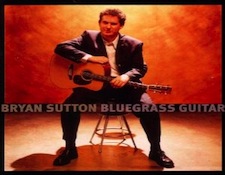It’s the time of year for saving money!

You’ve probably never heard of Andrea Zonn. Until a copy of Love Goes On showed up in my mailbox,
neither had I. Her press release calls her “Nashville’s secret weapon” because she
has played on so many major performers’ albums. Her credits include work with
Alison Krauss, Lyle Lovett, Trisha Yearwood, and Vince Gill. The daughter of
Paul Martin Zonn, chair of musical theory and composition department at the
University of Illinois, Andrea grew up surrounded by music, and began playing
violin at the age of 5. By 10 Andrea was competing in fiddle contests. At 16
Zonn emigrated to Nashville where she began playing on studio sessions. In 1990
she joined Vince Gill’s band, and 13 years later is still a member.
Unlike many studio aces and “sidemen” whose solo albums
showcase their technical skills, Love
Goes On zeros in on Zonn’s singing and arranging. Instead of original
compositions she chooses songs from A-list writers like Beth Neilson Chapman,
Karla Bonoff, Tom Kimmel, Don Poythress, Craig Carothers, Neil Finn, Leslie
Satcher, and Paul Brady. Love Goes On
highlights Zonn’s ability to interpret great songs for maximum emotional and
musical impact. Although much of what Zonn has done professionally has been in
a country musical idiom, Love Goes On
is far more mainstream pop than country. The opening track, Beth Neilson
Chapman’s “Heads Up for the Wrecking Ball,” begins with syncopated drums
followed by a pulsing violin line. That’s certainly not the sort of arrangement
you’ll find on a country CD. Along with her marvelously seductive voice, Zonn
contributes violin, viola, and chin cello. Other musicians on Love Goes On include Steven Sheehan on
acoustic guitar, Tom Britt on electric guitar, Alison Brown on banjo, John
Jarvis on piano, Tim O’Brien and Trent Truitt on mandolin, John Garner on
drums, and Alison Krauss, Amy Grant, Marcus Hummon, Jeff White, Darrell Scott,
Billy Thomas, John Randall Stewart, Jeff White, and Vince Gill on backing
vocals.
The hallmarks of a modern pop album are the lush production
values. Love Goes On delivers the
required suave sophisticated sonics. Complicated mixes retain the instruments’
individual voices in complex musical textures. Mixed by veteran studio pro Dave
Sinko and mastered by Randy LeRoy at Final Stage in Nashville, TN, Love Goes On has the same level sound
quality you’d expect from a multi-platinum big-budget major label release.
Love Goes On satisfies
on many levels. With superb songs, expertly arranged and performed, delivered
with great feeling and musicality. In the end the only disappointing thing
about Love Goes On is to realize that
it’s Andrea Zonn’s only solo release.

Mike Marshall & Chris Thile – Into the Cauldron
Bryan Sutton – Bluegrass Guitar
Sugar Hill Records kill me. During the last month they’ve put
out not one, but two great instrumental albums. Both showcase the work of
musical virtuosi, but while one highlights a traditional musical form, the
other takes you to the very limits of acoustic music.
Bryan Sutton’s second Sugar Hill release, conservatively titled
Bluegrass Guitar, showcases his
prodigious picking. Accompanied by fellow hotshots Tim O’Brien on mandolin,
Dennis Crouch on bass, David Talbot on banjo, and Tim Crouch on fiddle, Sutton
tears through traditional tunes such as “Hangman’s Reel,” “Daley’s Reel,” “Big
Sandy River,” “Margeret’s Waltz,” “High Heel Shoe,” and “Beaumont Rag”. Not
content with merely addressing fiddle tunes, Sutton also takes on a the bluegrass
staple, Bill Monroe’s “Roanoke,” and the early country classic A.P. Carter’s
“The Storms are on the Ocean”, Contemporary tunes by Bela Fleck,
“Whippersnapper,” and Tim O’Brien, “The High Road,” join Sutton’s original
“Nelia’s Dance” to complete the album’s roster. Sutton’s guitar playing
demonstrates you can be fast clean and
melodically creative while still honoring traditional forms and styles. For any
guitar player who thinks that nothing new can come of staying within the realm
of classic melodic invention, Suttons’ playing will be a revelation.

Equally revelatory, but for entirely different reasons, Mike
Marshall and Chris Thile’s Into the
Cauldron, takes you to the far edges of melody and structure with flights
of musical fancy where only a few exceptional musical minds can travel. Drawing
from musical sources as disparate as J.S. Bach and Charlie Parker, this
mandolin duo deconstructs then rebuilds familiar and traditional music into
crystal palaces. Both players have the virtuosity to be able to play anything
they can think of, and their imaginations know hardly any boundaries. Take
their interpretation of the traditional fiddle tune “Fisher’s Hornpipe.” After
one straight pass of the basic tune, they are off into improvisational realms
visited by few others. Not limited by only melodic improvisation, Marshall and
Thile, also dissect the rhythms and the interior form of the tune, laying
harmonies on top of each other’s melodically idiosyncratic lines with
impossible effortlessness. Throughout Into
the Cauldron it feels as if you are eavesdropping on a musical conversation
between two geniuses. As with most
erudite interchanges, first listen only allows partial comprehension of what
you’re hearing. Each subsequent listening further illuminates the subtleties of
their musical interchange.
Sonically Bluegrass
Guitar and Into the Cauldron are
as far apart as they are musically. Bluegrass
Guitar has a warm intimate studio ambience while Into the Cauldron tries to put some distance between the
instruments and their environment. Personally I find the sound on Bluegrass Guitar much more to my liking.
Into the Cauldron tries too hard to
artificially create a sense of big room remembrance that fights with the
intimate nature of the music. The end result is a synthetic environment that
detracts from rather than adds to the musical experience. The sound on Bluegrass Guitar never gets between the
listener and the music.
Bluegrass Guitar and Into the Cauldron are both “must have”
releases, but for very different reasons. Bluegrass
Guitar shows you how through exploration of time-honored tunes and musical
forms allows the discovery of new, but traditionally consistent,
interpretations. Into the Cauldron displays
the scope of musical invention possible when no limitations are placed on
improvisation.





